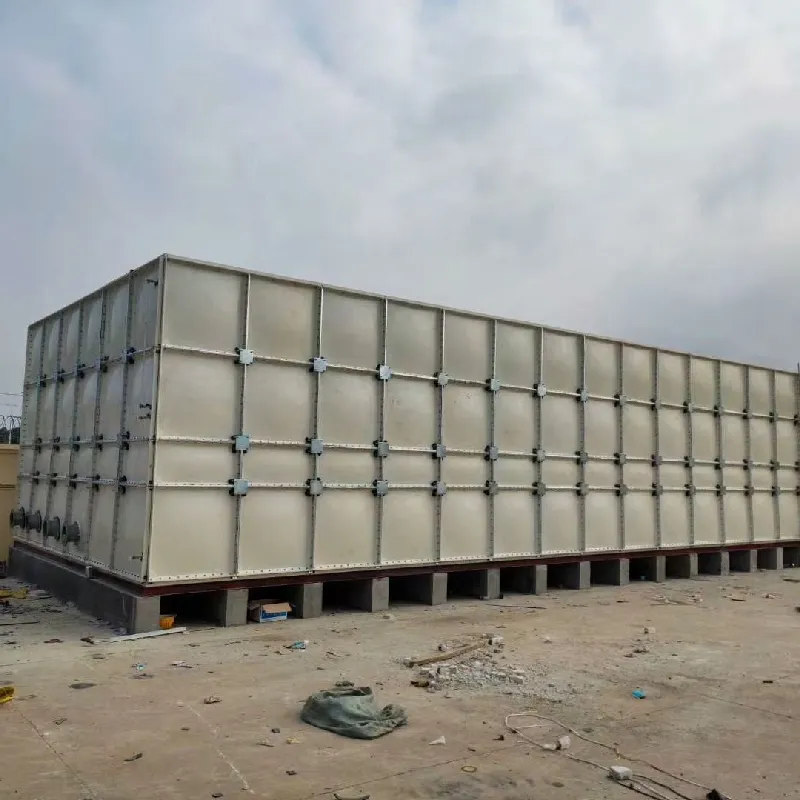loading...
- No. 9, Xingyuan South Street, Dongwaihuan Road, Zaoqiang County, Hengshui, Hebei, China
- admin@zjcomposites.com
- +86 15097380338
- Welcome to visit our website!
moltruded grating
Understanding Molded Gratings Applications and Advantages
Molded gratings are an essential component in various industrial and architectural applications, providing optimal solutions for safety, aesthetics, and functionality. These panels, often made from fiberglass reinforced plastic (FRP), utilize a unique manufacturing process that allows for precise molding of intricate patterns and forms. This article delves into the characteristics, applications, benefits, and considerations surrounding molded gratings.
Characteristics of Molded Gratings
Molded gratings are characterized by their light weight, high strength, and corrosion resistance. The manufacturing process involves the mixing of fiberglass strands with a resin, which is then poured into a mold that defines the final shape of the grating. Once cured, the resulting product benefits from the structural integrity provided by the fiberglass, while the resin ensures resistance to moisture, chemicals, and UV radiation.
The grating can be designed in various patterns based on specific load requirements and aesthetic preferences. Typical patterns include rectangular, square, and hexagonal shapes, allowing users to select options suited to their particular needs. Additionally, molded gratings can be constructed to different thicknesses and load-bearing capabilities, making them versatile for a range of applications.
Applications of Molded Gratings
Molded gratings find extensive usage across numerous sectors. In industrial settings, they are predominantly utilized for walkways, stair treads, and platforms. Their non-slip surface ensures safety in environments that may become wet or oily, significantly reducing the risk of accidents. Furthermore, their lightweight nature allows for easier installation compared to traditional materials like steel or concrete.
In the chemical and waste management industries, molded gratings serve as flooring solutions that can withstand harsh chemicals and extreme conditions. Their resistance to corrosion makes them an ideal choice in environments where metal would rapidly degrade. Additionally, molded gratings are employed in water treatment facilities, allowing for effective drainage while maintaining structural strength.
In the architectural domain, molded gratings provide a modern, aesthetically pleasing option for building facades, sunshades, and decorative features. Their ability to be easily molded into intricate designs means they can enhance the visual appeal of a structure while serving practical functions.
Advantages of Molded Gratings
moltruded grating

The benefits of using molded gratings are manifold. First and foremost, their superior corrosion resistance translates to a longer lifespan and reduced maintenance costs. By avoiding the need for regular replacement or repair, companies can save both time and money.
Moreover, molded gratings are environmentally friendly. The materials used can often be recycled, and their longevity contributes to a reduced environmental footprint compared to more traditional materials. Additionally, many manufacturers of molded gratings are focusing on sustainable practices in production, further enhancing their eco-friendliness.
Molded gratings are also highly customizable. Clients can choose from a variety of colors and finishes to suit their design requirements. Furthermore, added features such as anti-slip surfaces or UV protection can be incorporated into the initial fabrication process, ensuring that the final product meets specific needs.
Another crucial advantage is that molded gratings are non-conductive, making them an excellent choice for electrical applications. In areas where electrical hazards may be present, molded gratings provide a safe alternative to metal grates, reducing the risk of accidental shocks.
Considerations When Choosing Molded Gratings
While molded gratings boast numerous advantages, there are important factors to consider when selecting the appropriate product for a project. Load capacity is paramount; it is essential to assess the expected traffic and weight that the grating will need to support. Additionally, the environment must be evaluated — high temperatures or extreme conditions may affect the longevity or performance of the material.
It is also advisable to source molded gratings from reputable manufacturers who adhere to safety and quality standards. Ensuring that the product is manufactured to meet relevant regulations can safeguard against potential failures and accidents in the future.
Conclusion
Molded gratings represent a practical and durable solution with wide-ranging applications in both industrial and architectural contexts. Their unique characteristics, coupled with the numerous advantages they offer, make them a preferred choice for many professionals in the field. Whether for safety, aesthetic enhancement, or functional requirements, molded gratings will continue to be an important component in modern construction and manufacturing.
-
The Rise of FRP Profiles: Strong, Lightweight, and Built to LastNewsJul.14,2025
-
SMC Panel Tanks: A Modern Water Storage Solution for All EnvironmentsNewsJul.14,2025
-
GRP Grating: A Modern Solution for Safe and Durable Access SystemsNewsJul.14,2025
-
Galvanized Steel Water Tanks: Durable, Reliable, and Ready for UseNewsJul.14,2025
-
FRP Mini Mesh Grating: The Safer, Smarter Flooring SolutionNewsJul.14,2025
-
Exploring FRP Vessels: Durable Solutions for Modern Fluid HandlingNewsJul.14,2025
-
GRP Structures: The Future of Lightweight, High-Performance EngineeringNewsJun.20,2025
